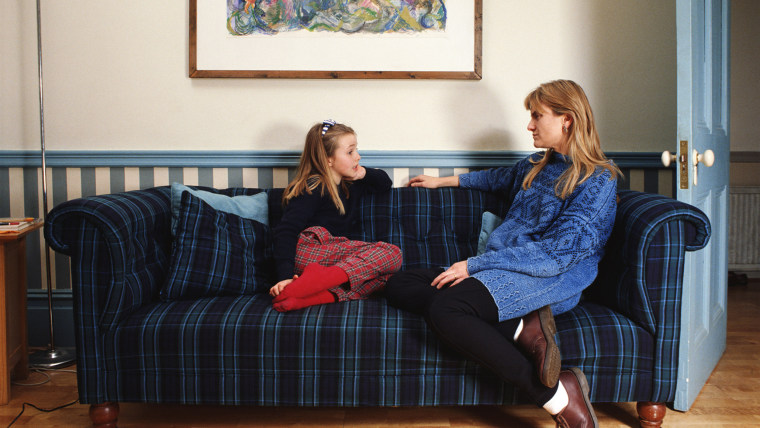The horrifying video of a mother driving her minivan — with her three children inside — into the ocean, and the dramatic rescue by lifeguards, has transfixed parents nationwide.
It’s yet another news story that’s difficult to explain to young kids. And while it’s similar to talking about why awful things such as the massacre at Sandy Hook Elementary or the Aurora, Colo., theater shooting happen to innocent people, this near-tragedy touches a different nerve since it’s a parent making the headlines.
“Why would a mom do that?” 9-year-old Cameron Relicke of Fort Lauderdale, Fla., asked his mother Susan this morning, when he saw the news report on television before going to school. “Is she crazy? She needs to go to jail,” Cameron said of the mom driver.
For Susan Relicke, the story was an opportunity to explain to her son how some individuals, even parents, have mental illness and how they need treatment instead of being sent to jail.
Jennifer Landes of Bellevue, Wash., hasn’t yet talked about the incident with her two young sons, but plans to also focus on the fact that the mom in question isn’t healthy. “This one is harder to explain than a school shooting because parents are supposed to protect their kids,” Landes said. “But I would lump it in the same sensitive matter … it’s a parent who is sick.”
New York City child psychologist Dr. Jennifer Hartstein agrees that such events can be tough to explain because children don’t expect parents to act in this way.
“Children think that mothers are there to protect them, not incorrectly, and may be confused as to why this mother put her children in harm’s way,” Hartstein told TODAY Moms.
With such dramatic video of the minivan going into the water in Daytona Beach, Fla., and lifeguards performing the rescue by carrying the children — two girls and a boy, ages 3, 9 and 10 — to safety, it’s no surprise that the incident is being replayed over and over on television news. Unfortunately, this makes it all the easier for children to see.
If possible, Hartstein suggests that parents should avoid watching news reports or mentioning the story in front of children. And she says it’s best to wait for their questions, rather than providing too much information.
“If your child does see what happened, reassure them that this is not something that will happen with you and reinforce their feeling of safety and security,” Hartstein said.
Psychologist Robyn Silverman says that explaining mental illness in simplistic terms is a way to help kids understand what may have led to the mom’s actions.
She suggests telling young kids that there are a lot of ways people get sick. "Sometimes it’s the flu or a broken bone," she says. "Sometimes it’s related to our brains. That’s mental illness and when our brains get sick, we have to go to a special doctor to help us.”
For older kids, Silverman says you can discuss how mental illness is not something that switches on and off and that there are often earlier signs that something isn’t right. No matter the age of a kid, it’s important to emphasize that mental illness, if ignored, is just like if you have a bad cut and you ignore it — it can get worse and worse until you get help from a doctor.
Both Silverman and Hartstein say it’s important to emphasize the positive, which is that the kids involved were rescued and people were there to help them.
“The good part about seeing the rescue is that children can see that there are people who will step in and help, and provide safety and support,” Harstein adds. “That’s really important for reassurance purposes.”
According to news reports, as the minivan approached the ocean, the kids were seen crying and waving and yelling, “Please help us, our mom is trying to kill us.”
This sends the message to kids that when something isn’t right, you can call out for help and someone will be there, Silverman says.
“Those kids screamed. That was so terrific," she says. "They were actively part of their own rescue."
